
Issue 206
June 2024
Before championship belts were on the line, the world's greatest fighters were locked in their own battles. Isaac Barnett delves into the gritty and inspiring MMA origin stories that forged these warriors into the legends they are today.
Some had it easy, while others took the hard way around, to arrive at the same destination. We've included both sides of the coin to reflect on how MMA stars come from all over the world, with different cultures, not one of them is the same. To make it to the sport's top tier, you need to stand out. They’re not the same as everyone else. These fighters have always done things differently, and all of that started with their remarkable origin story. From walking across a continent to surviving the favelas of São Paulo, we look at the beginnings of the sport’s most revered fighters and the stories behind their MMA careers.
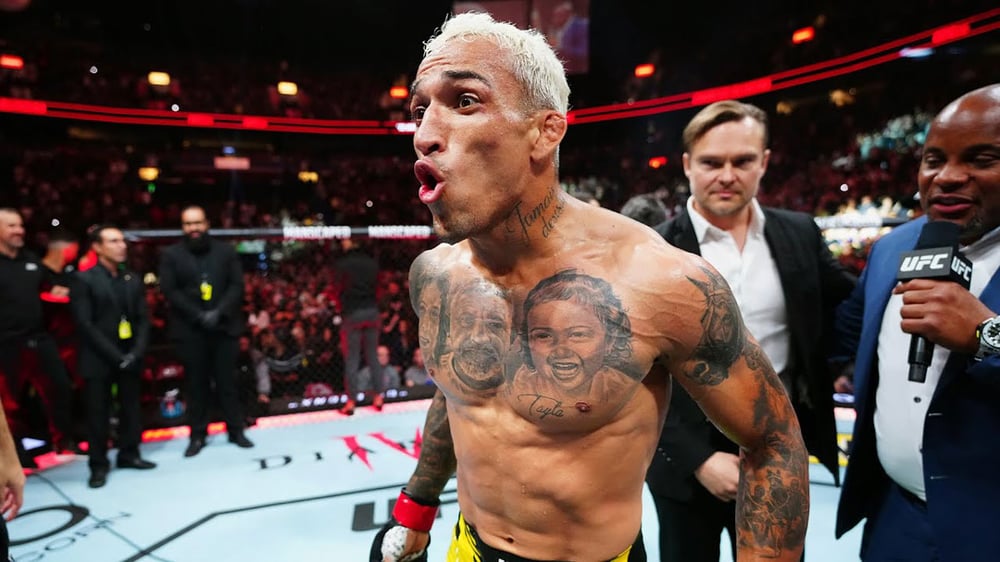
CHARLES OLIVEIRA - THE FAVELA’S FIGHTER
“De Bronx’s” sudden rise in the UFC was unprecedented, and his championship run will undoubtedly go down as one of the greatest the sport has ever seen. Before rising to claim the lightweight belt, however, everyone counted him out, often labeled a quitter or a fighter who would always fall short when it counted.
But you should know his story before giving an opinion, and honestly, it makes his rise to the top seem less surprising.
At age 10, Oliveira learned that he was not going to have an everyday life, and for almost two years, he was stuck in the hospital. His mother and father would take turns sleeping next to his hospital bed. They would go to work and return straight to his bedside again, often never going back to their family home. His mother once did not go home for an entire month.
He had juvenile arthritis and a heart murmur, which made his life extremely painful and meant he could not play sports like all of the other kids. The doctors told his father that he would not be able to play football, which is treated like a religion in Brazil.
Not only did his health put him at a disadvantage, but Oliveira’s family lived next to the favelas in São Paulo, Brazil. They struggled with poverty, and because of how long his parents had to work to put food on the table, Oliveira's grandmother practically raised him. His parents sacrificed everything for him.
On the Ironberg podcast, he said: "They did everything for us, that's why today I kill and die for them, I do everything for them. My heroes are my father and mother."
The favelas are known for being some of the most crime-ridden places in the world, but this means the communities come together.
Through this, Oliveira’s neighbor, Paulo, became close to his family. After seeing Oliveira unable to play football with the other kids, he convinced his mother to take him to jiu-jitsu.
On the Ironberg podcast, he continued: “At 12 years old, Jiu-jitsu helped me, I found myself, of everything I’ve ever done I thought that this is what I want to do.
“Then I started training, and I dedicated myself, thanks to the good god, everything I fought I won in the world of jiu-jitsu.”
It only took Oliveira one month to win his first tournament. Paulo continued taking him to practice every day, and before the pair knew it, two years had passed. Oliveira improved and continued to win tournaments.
However, what the favelas can give, they can also take.
Paulo was killed in a shootout in the favelas when Oliveira was 14. The tragic event devastated Oliveira and continues to impact him to this day because he could not see what "De Bronx" ended up achieving with his life.
He continued training and winning, and by the time he was 18, he began his journey in MMA. He was determined to create a better life for his family. The first night he fought, he competed against three guys in one night in a mini grand prix, and he won all the fights and prize money.
On the Ironberg podcast, he said: "I thought damn, I can do this here and give something better to my family.
"So, I asked the top guys at the time, and they said, you've got talent, man, you've got talent. 15 days later, I fought another GP of three fights. 15 days later. I won again, and then I made money."
These events would be the catalyst for his rollercoaster career, and in doing so, he gave the champ his name, Charles "De Bronx" Oliveira, "a favela venceu"-The favela winner.
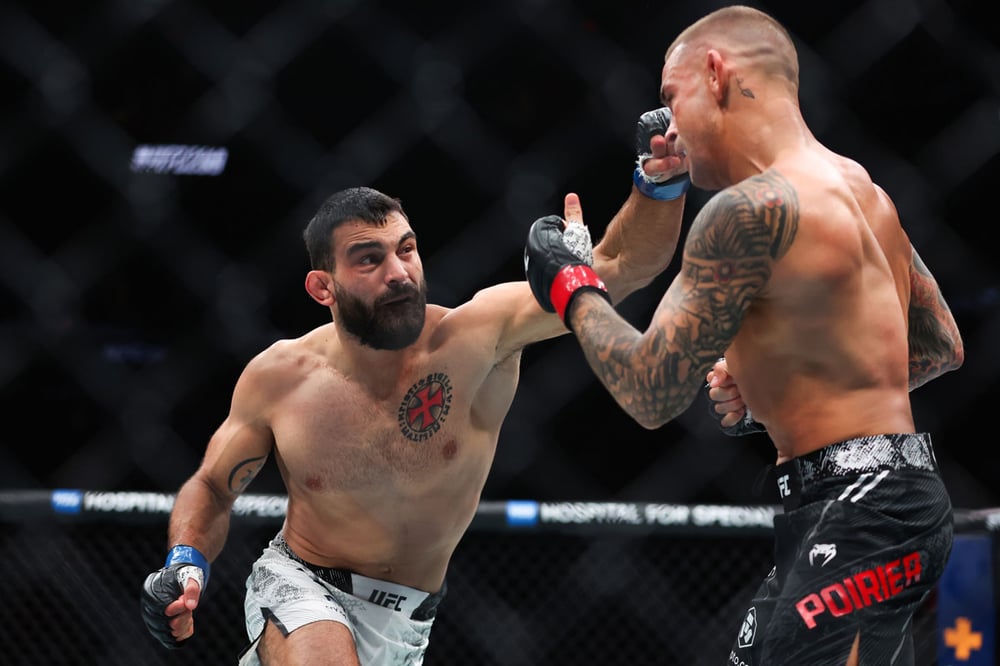
BENOÎT SAINT DENIS - THE SOLIDER
Saint Denis’s nickname, “the god of war,” is perfect for his violent fighting style in the cage and interesting MMA transition. The French native was born in 1985 in Nimes, France, often referred to as “little Rome” by its inhabitants because of Roman heritage and architecture all over the city. His father was in the French military and practiced judo at a high level, while his mother was a teacher. By his own account, they never struggled and had everything they needed growing up, along with his four siblings. Saint-Denis was the firstborn child and felt responsible for being a role model to his siblings.
In an interview with the UFC, he said: “We were a group of brothers looking out for each other. I took my role as the firstborn child very seriously.”
Between the ages of eight and 16, he followed in his father’s footsteps and began training in judo, in which he went on to achieve a black belt.
He also realized that at a young age, he wanted to join the French armed forces, and as soon as he could, that’s precisely what he did, following his father's example.
He continued: “My father was in the French foreign legion. He worked on a lot of missions outside of the country, so we moved a lot.”
After an 18-month training period, Saint-Denis joined The Commandement des Opérations Spéciales, the French equivalent of Navy Seals.
His already diverse fighting skills allowed him to excel in his group, and he had a respectable five-year career.
“Mostly what I did was counter-terrorism, in the sub-Saharan brand against Boka Haram and a couple different branches of Islamic State. I did protection of high profile as well, presidents, ministers, generals.”
His service to his country earned him the Medal of the Nation’s Gratitude and the Combatant’s Cross. But, after half a decade in the service, Saint-Denis felt his time was up and wanted to pursue something new.
“After five years of spec ops, I was looking for my own adventure. In the army, you are always under orders. I wanted to be my own boss.”
This is where he turned to the world of MMA. He already had a good background in combat sports, and he certainly didn’t have anything to prove with his military mentality.
“I already trained BJJ since 2017. In 2018, I did a lot of kickboxing. I knew that if I did not try an MMA career, I would regret it.”
Before he knew it, he was 8-0 and fighting in the UFC.
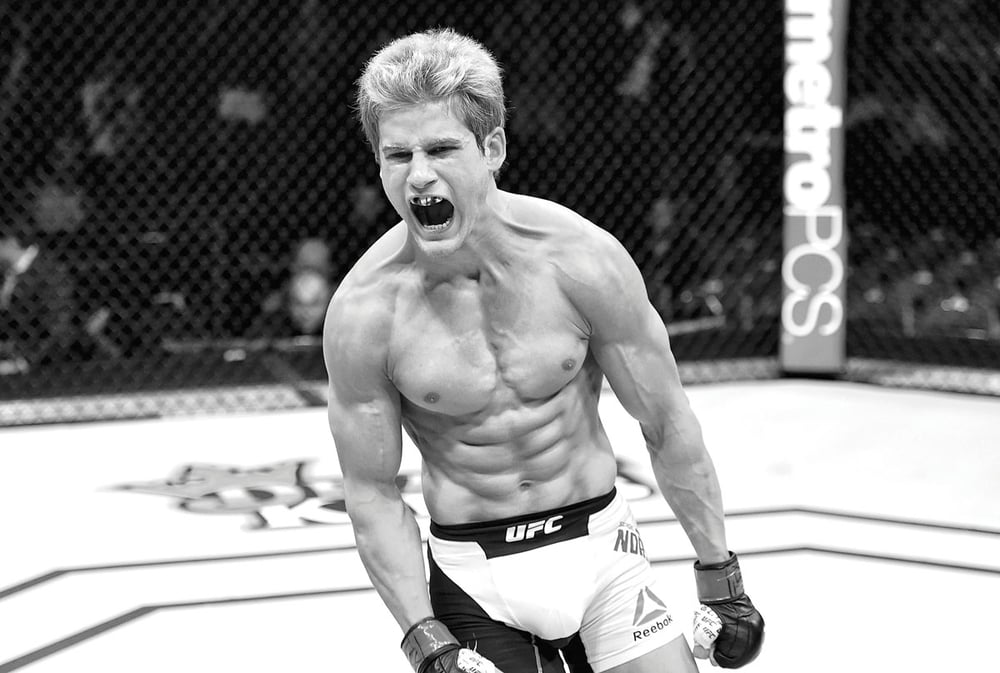
SAGE NORTHCUTT - THE PRETTY BOY
It’s astonishing that Northcutt first joined the UFC almost a decade ago, and it may shock you that he is still only 28 years old. It’s fair to say he’s been around the block since then. But with youth on his side and a deeply rooted background in the sport, his story is far from over. “Super” Northcutt was born in 1996 in Sacramento, USA. He grew up alongside his brother, Shaun, and his sister, Colbey, who was an amateur kickboxing champion during her youth and, like her younger brother, is now a professional MMA fighter currently signed to ONE Championship. Northcutt’s father, Mark, trained in shura-ryū karate, also earning a black belt in the discipline. He’s coached Northcutt his entire life.
It probably doesn’t come as a surprise that Northcutt was introduced to martial arts at a young age, and at four years old, he began training karate.
Speaking to Evolve Mixed Martial Arts, he said: “I was kind of bred for martial arts since I was a little kid. I started when I was four and trained with my sister and brother. My parents built a dojo in our house so that we could train whenever we wanted.”
By the time he was six, his dad was entering the young boy into national tournaments, which he won most of. During that time, he developed his now-infamous personality, which is always welcoming and humble.
Speaking to UFC on FOX, Mark Northcutt said: “When Sage was little, we went to these tournaments in other states up, sometimes in over counties, he was so friendly that he was always walking up and talking to other people. We would tell him how dangerous that was, and there would be 1000 competitors and 1000 friends so there would be several thousand people there, and we’d be looking for him, sometimes we’d find him in the parking lot talking to strangers.”
His success in these tournaments cannot be overstated. He collected an astonishing total of 77 world youth championships in karate. He was also on the cover of Sport Karate Magazine when he was nine years old, the youngest they’ve ever had. Northcutt attended Seven Lakes High School for his first two years before transferring to Katy High School during his sophomore year.
He continued winning championships during this period, earning him a spot in the Black Belt Magazine’s Hall of Fame when he was 15. Alongside his illustrious karate career, he also trained in kickboxing alongside his sister, amassing an impressive 15-0 record.
Once he started attending high school, he also practiced and competed in wrestling. At this point in his life, he first thought of becoming an MMA fighter.
He joined Texas A&M University’s NCWA wrestling club, where he decided to drop out of university to follow his dream and dedicate himself to his full-time goal.
Not too far into the future, Dana White found “Super Sage” on his Looking for a Fight show, and he was signed to MMA’s premiere promotion shortly after.
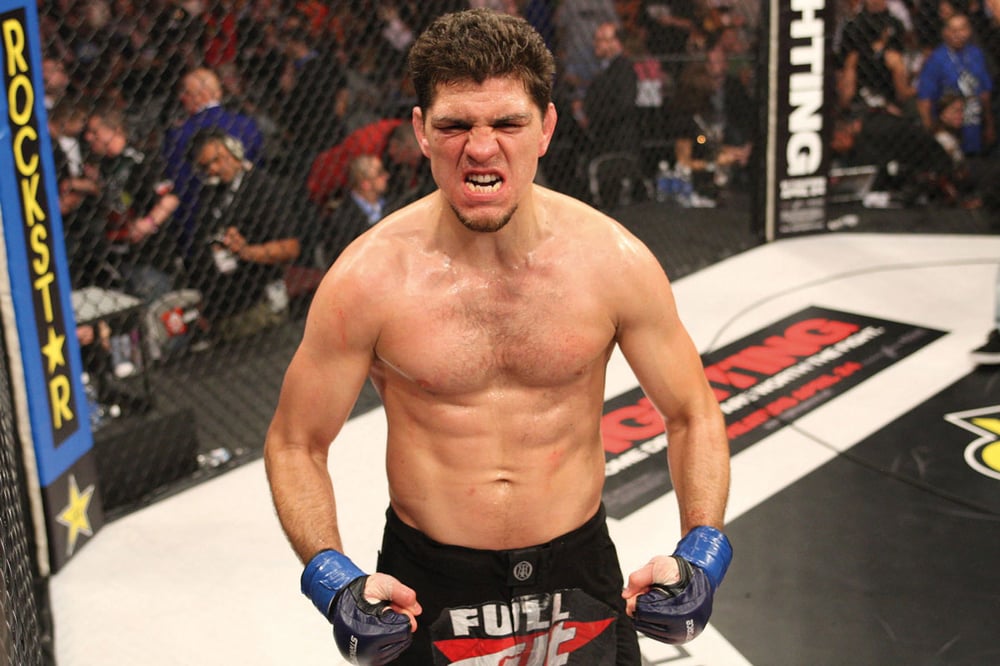
NICK DIAZ - HE WHO WANTED TO SURVIVE
Nick Diaz and his younger brother Nate have a notoriety and uniqueness that is quite unlike any other fighter in MMA. What you see is what you get.
They have an astonishing toughness to them, which always shows whenever either one of them competes. Challenging circumstances breed tough men, and Diaz knows that better than anyone. He grew up in Stockton, California, a notorious town in the state known for its poverty and high crime rates.
Diaz’s father was not present, and his mother struggled to provide for her family by working at a local diner on a minimum wage. He first got into sports because his mother and grandfather encouraged him to swim and run. These sports helped Diaz stay clear of the streets and stopped him from being involved with crime. While he wasn’t always looking for trouble, trouble did tend to find Diaz more often than not.
Diaz would get anxious before high school because he was constantly getting into fights and struggling to fit in with the other kids.
Speaking to UFC on FX, Diaz said: “Someone would come up to me and say you're going to fight this guy and that he would whoop my ass, and I’d say f*ck you, I’m going to whoop your ass. Next thing you know, I’ve got problems with that guy and another guy. High school was hard times. You don’t know if you’re going to get shot or stabbed or jumped at school because that happened to everyone else. It’s not like I was paranoid or anything. I just wasn’t stupid.”
Diaz knew he needed to learn to defend himself, so he began wrestling when he was 14. He struggled academically and found himself frustrated with learning how to wrestle well.
At that time, he was renting UFC tapes from Blockbusters, and this was when he first discovered jiu-jitsu and ultimately began training at a local gym. This gym is where he met his first MMA coach, Steve Heath. Diaz was a massive fan of the Gracie family, and when he learned that Cesar Gracie taught Heath, he knew he had to meet him.
In an interview with UFC on FX, Heath said: “When I first met Nick, he was hanging out with the wrong crowd, jiu-jitsu offered him an avenue to look at the world in a different way. He didn’t relate well in school because they tell you you’re going to do this homework, you’re going to learn it the way we are going to teach you, and if you don’t, you will fail. With martial arts, it's something he could do his way.”
From there, Diaz trained, became less interested in school, and became more addicted to MMA training. Nate followed suit and began training.
Nick felt responsible for Nate because of their father's absence, which further motivated him to be a disciplined role model for his younger brother. After a couple of years of training, Diaz believed his only shot at a successful life was to become a professional MMA fighter, and he promised his girlfriend at the time, Stephaine, that he would achieve his goal. She believed in him, but what he saw as the most important person in his life at that time would motivate him more than anything else. Stephaine killed herself the night after she first told Nick that she loved him, and this tragic event molded Diaz from a boy to a man.
In an interview with MMA Fighting, Diaz said: “Before I ever had my first pro fight, my friend had a party at his house, the night before Stephanie told me that she loved me. After the party, there was a wreck on the freeway, I jumped the fence and saw only one car and ambulances. Stephanie had walked and killed herself on the freeway. The girl I loved more than anything had tried to kill herself for the third time and succeeded. After that, I was grown up. It was all over. I wasn’t a kid anymore. I won my first fight in the first round with a choke, and all I could think about was her. I would run seven miles and back to her grave just to promise her I would be a fighter.”
Not too long after, Diaz had his first MMA fight, and he won by submission in the first round. All he could think about when he won was her, and he continued to win in her memory throughout his illustrious career.
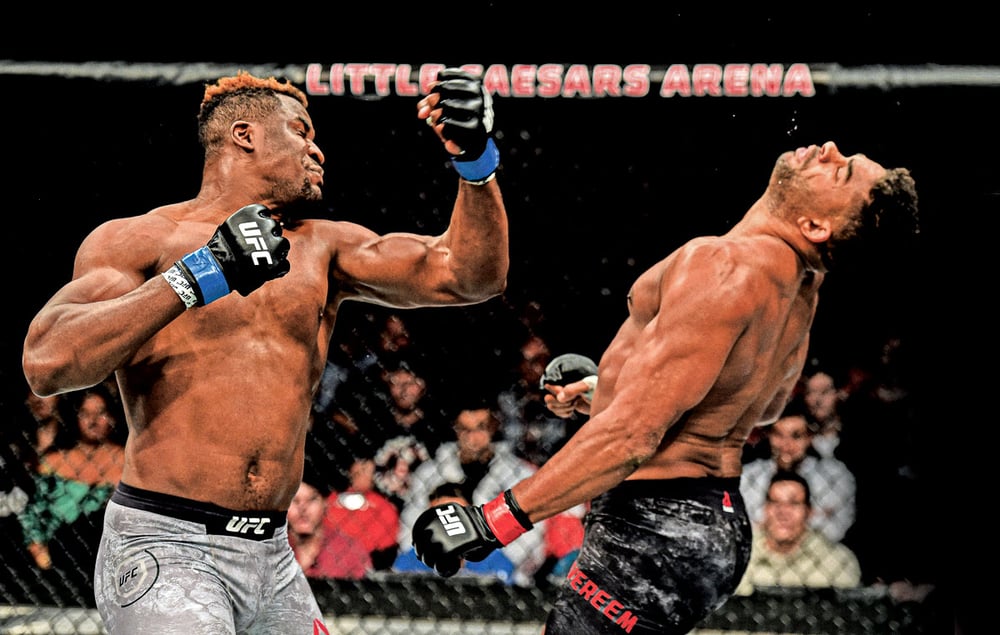
FRANCIS NGANNOU - FROM NOTHING TO EVERYTHING
Ngannou, a name known for strength and perseverance in the world of MMA, has a story that defied all the odds and saw a humble man from Cameroon rise to become the baddest man on the planet.
His journey to the pinnacle of combat sports is a testament to his resilience and determination, traits he honed from a young age, worthy of a Hollywood movie. “The Predator” was born on September 5, 1986, in the village of Batié, located in the western part of Cameroon. Growing up in Batié was anything but easy. Like many rural areas in Cameroon, the village was plagued by poverty and a lack of opportunities.
His mother and father separated when he was young, so his mother was responsible for raising him. Often, Ngannou had to fend for himself. This challenging environment instilled in him a sense of responsibility and a strong work ethic from an early age.
He did have access to an education at this point. However, even that was a struggle for the young boy who had to walk six miles to school daily. By age 10, Ngannou was forced to give up his education to work in sand mines to help put food on the table for his family.
The labor was grueling, involving long hours under the scorching sun, digging and shoveling sand. This physically demanding work helped Ngannou become much stronger than other kids his age. It’s one of the reasons he has such a muscular physique.
During this time, he discovered his love for boxing and fell in love with watching the legendary “Iron” Mike Tyson. This passion sparked his dream of becoming the world's heavyweight champion. When he turned 26, he pursued his dream by migrating to France. This journey, however, would be harder than any amount of time in the sand mines could have ever been.
Speaking to Joe Rogan on the JRE, Ngannou said: "My journey from Cameroon to Paris was 14 months. I couldn't go to the airport and take a plane to France. I had to use all the back doors.”
He began by walking to Nigeria and then almost 400 miles to Kano before coming to Niger. He didn’t have a Visa to enter the country, resulting in run-ins with the border police.
"So, we had to deal with the police, border protection officers. You get caught, they ask you for money, like a bribe. You don't want to give all your money. You need that to survive."
After that, he crossed the Sahara Desert in the back of a truck with 25 other illegal immigrants. He had very little access to water, which caused life-threatening dehydration and forced him to drink water with dead animals inside. He used a fake ID to get into Algeria and then traveled to Morocco, the most challenging part of his journey.
"It's like the hell country for immigration because it is a country closer to Europe. At some point, the land in Morocco is just five miles from Spain.
“If you fail, they are going to bring you back to the south and throw you in the desert to let you go. It’s their own way to say, ‘Go back to your own country.’”
He spent one year in Morocco, failing to get past border control on six occasions, a few of which resulted in him being cut by barbed wire and having to visit the hospital. Ngannou wouldn’t be denied and eventually got himself into Spain. Thanks to his false ID, he could not be deported.
He used a train to get to France, choosing to settle in Paris. After living on the streets for some time, sleeping in car parks, and using public facilities to keep himself clean, he began boxing. It quickly dawned on him that being in France at the age of 26 meant that there wouldn’t be much opportunity for him to make a life for himself in boxing.
He eventually crossed paths with Fernand Lopez, also from Cameroon, who took a liking to Ngannou and let him move into the MMA factory, where he began teaching him MMA. He moved into the gym, and after just four months, Lopez decided he was ready to make his MMA debut. The rest is history.
ORIGINS MATTER
Their journeys remind us that the battles inside the cage are often overshadowed by the ones fought outside it. Fighters have risen above their circumstances through sheer grit and unwavering determination to become legends. As you watch them in the octagon, remember that their most significant victories were won long before they ever stepped into the spotlight. In the world of MMA, it’s not just about the fight you see—it's about the fight before the fight.










